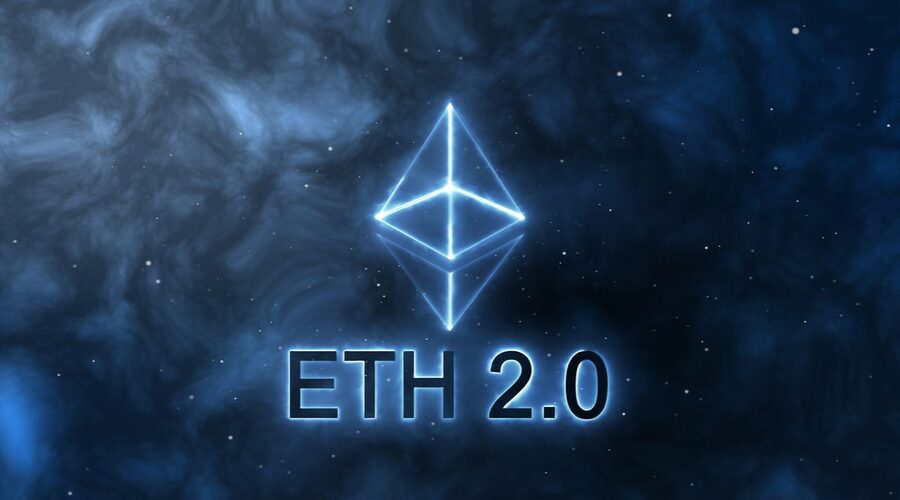
The Governance Challenges of Scaling Solutions like Ethereum 2.0
Interested in the governance challenges associated with scaling solutions like Ethereum 2.0? In this comprehensive article, we will explore the intricacies, considerations, and potential hurdles in the governance of Ethereum’s transition to a more scalable and efficient ecosystem. By understanding these challenges, we can gain insights into the strategies, innovations, and community-driven approaches that are essential for successfully managing the governance aspects of scaling solutions.
Introduction: Scaling Solutions and Ethereum 2.0
Scaling solutions like Ethereum 2.0 aim to address the scalability challenges faced by the Ethereum network. These solutions introduce new mechanisms, such as sharding and proof-of-stake, to enable higher throughput, lower fees, and improved overall network performance. However, the governance aspects of implementing and managing these scaling solutions present unique challenges.
The Need for Scalability in Ethereum
Ethereum’s growth and increasing adoption have highlighted the need for scalability. As the network experiences congestion and high transaction fees during periods of heavy usage, the demand for scaling solutions becomes apparent. Achieving scalability is crucial for Ethereum’s continued success and mass adoption.
The Governance Challenges of Scaling Solutions
Implementing and governing scaling solutions like Ethereum 2.0 introduce several challenges. These challenges include:
- Technical Complexity: Scaling solutions often involve intricate technical upgrades and changes to the Ethereum protocol. The governance process must effectively navigate and oversee these complex technical aspects.
- Consensus Transition: Moving from the current proof-of-work (PoW) consensus to proof-of-stake (PoS) in Ethereum 2.0 requires careful coordination and governance. The transition must ensure the security, fairness, and stability of the network during the switch.
- Network Upgrades and Forks: The introduction of scaling solutions may necessitate network upgrades or even forks. Governance entities must manage the coordination, decision-making, and community consensus required for successful upgrades and potential forks.
Ensuring Decentralization and Security
Maintaining decentralization and security in the face of scaling solutions is crucial. As Ethereum evolves, governance entities must ensure that the introduction of new mechanisms does not compromise the decentralized nature of the network. Effective governance processes must balance scalability with the principles of decentralization and network security.
Community Participation and Governance Evolution
Scaling solutions require active community participation and engagement. Governance processes must facilitate open dialogue, transparency, and inclusivity to ensure that community voices are heard and taken into account. Additionally, governance entities must foster an environment that encourages the evolution of governance mechanisms to address the unique challenges posed by scaling solutions.
Navigating Consensus Upgrades and Forks
The implementation of scaling solutions like Ethereum 2.0 may involve consensus upgrades or forks. Governance entities must navigate these transitions carefully, ensuring that they maintain broad community consensus and minimize disruption. Robust governance frameworks and communication channels are essential to effectively manage consensus changes and potential forks.
Case Studies: Governance Challenges in Ethereum 2.0
Examining case studies within Ethereum 2.0 provides valuable insights into the governance challenges associated with scaling solutions. Examples include the coordination of the Beacon Chain launch, the implementation of shard chains, and the ongoing governance decisions related to protocol upgrades and adjustments.
Economic Implications and Token Economics
Scaling solutions like Ethereum 2.0 introduce changes to the economic model and token economics of the ecosystem. Researchers and governance entities explore the economic implications of scaling solutions, including the impact on token supply, inflation rates, staking rewards, and the overall economic stability of the network.
Understanding the economic implications helps governance entities design and adjust incentive structures, monetary policies, and token distribution mechanisms to ensure a balanced and sustainable ecosystem as Ethereum scales.
Interoperability and Compatibility Challenges
Scaling solutions often require interoperability and compatibility with existing applications, protocols, and smart contracts within the Ethereum ecosystem. Governance entities face the challenge of ensuring smooth integration and migration of existing projects to the new scaling solution without disrupting functionality or compromising security.
Efforts in research and governance focus on developing standards, compatibility frameworks, and migration strategies to facilitate the adoption of scaling solutions while maintaining compatibility with the existing Ethereum infrastructure.
Governance Participation and Voter Engagement

As Ethereum transitions to scaling solutions, governance entities face the challenge of maintaining active participation and engagement from token holders in governance processes. Scaling solutions may require adjustments to voting mechanisms, participation requirements, or consensus protocols, which can impact token holder involvement.
Governance entities implement strategies to encourage voter engagement, educate token holders about the benefits and implications of scaling solutions, and ensure that their voices are heard in decision-making processes. This includes creating user-friendly interfaces, providing accessible information, and incentivizing participation.
Legal and Regulatory Considerations
Scaling solutions like Ethereum 2.0 may introduce legal and regulatory challenges that governance entities must navigate. As the Ethereum ecosystem scales and attracts more attention from regulators and policymakers, governance processes must align with applicable laws and regulations while maintaining the principles of decentralization and user privacy.
Governance entities collaborate with legal experts, engage in dialogue with regulators, and proactively address compliance concerns to ensure that scaling solutions adhere to legal requirements and foster a favorable regulatory environment.
Community Governance Education and Awareness
With the introduction of scaling solutions, community governance education and awareness become crucial. Governance entities invest in educational initiatives, workshops, and community outreach to ensure that stakeholders understand the benefits, implications, and governance processes associated with scaling solutions.
Educational efforts promote informed decision-making, encourage active participation, and empower the Ethereum community to actively contribute to the governance of scaling solutions. This includes providing resources, documentation, and interactive platforms for discussions and feedback.
Governance Transparency and Accountability
Scaling solutions introduce new governance processes, decision-making structures, and coordination mechanisms. Governance entities must prioritize transparency and accountability to ensure that the community understands and trusts the governance decisions made during the transition.
By providing clear and accessible information about governance processes, proposals, and decision outcomes, governance entities foster transparency. Additionally, accountability mechanisms, such as audits, regular reporting, and public disclosure of governance activities, promote responsible governance practices and build trust within the community.
Governance Coordination and Network Consensus
The implementation of scaling solutions requires effective coordination among governance entities, developers, validators, and the broader community. Governance frameworks must address the challenges of achieving consensus on critical decisions, including protocol upgrades, network migrations, and parameter adjustments.
Governance entities facilitate coordination through clear communication channels, collaborative decision-making processes, and consensus-building mechanisms. These efforts ensure that all stakeholders are aligned and work together towards the successful implementation and governance of scaling solutions.
Resource Allocation and Funding
Scaling solutions often require substantial resources for development, testing, and deployment. Governance entities face the challenge of allocating funds and managing resources effectively to support the implementation of scaling solutions while maintaining transparency and accountability.
Research and governance efforts focus on developing funding models, grant programs, or treasury systems that allocate resources in a fair, sustainable, and community-driven manner. These mechanisms ensure that resources are allocated to projects and initiatives that contribute to the successful scaling of Ethereum.
Regulatory Compliance and Governance
As Ethereum scales and attracts increased attention from regulators, governance entities must navigate regulatory challenges and ensure compliance with applicable laws. This includes addressing issues related to data privacy, financial regulations, consumer protection, and other legal considerations.
Governance entities collaborate with legal experts, engage in regulatory discussions, and proactively implement measures to ensure compliance while preserving the principles of decentralization and user sovereignty. Compliance frameworks and legal guidance assist governance entities in navigating the evolving regulatory landscape.
Education and Onboarding of Validators and Stakeholders
Scaling solutions often require the participation of validators and stakeholders who contribute to the network’s security, consensus, and governance. Governance entities invest in educational initiatives, documentation, and onboarding programs to ensure that validators and stakeholders understand their roles, responsibilities, and the governance processes associated with scaling solutions.
Educational resources, workshops, and support channels facilitate the onboarding process, empower participants, and foster a strong and knowledgeable validator and stakeholder community. This ensures effective governance participation and enhances the overall security and resilience of the Ethereum network.
Governance Interactions with Layer 2 Solutions
Scaling solutions like Ethereum 2.0 often coexist and interact with layer 2 solutions, such as state channels or sidechains. Governance entities face the challenge of coordinating and aligning governance processes between the main chain and layer 2 solutions to ensure interoperability, consistency, and seamless user experience.
Efforts in research and governance focus on developing standardized interfaces, protocols, and governance mechanisms that facilitate smooth interactions between the main chain and layer 2 solutions. This includes addressing challenges related to cross-chain communication, security, and decision-making coordination.
Sybil Attacks and Governance Manipulation
Scaling solutions bring about new challenges in ensuring the integrity and fairness of governance processes. Governance entities must address the risk of Sybil attacks and manipulation attempts, where malicious actors create multiple identities or tokens to gain undue influence over governance decisions.
To mitigate these risks, governance entities explore identity verification mechanisms, reputation systems, and token-weighted voting protocols that discourage Sybil attacks and promote a more secure and robust governance ecosystem.
Conclusion
Navigating the governance challenges of scaling solutions like Ethereum 2.0 requires careful coordination, collaboration, and adaptability. Effective governance processes that prioritize decentralization, security, community participation, and consensus-building are essential for the successful implementation and management of scaling solutions. By addressing these challenges head-on, Ethereum can evolve into a more scalable and efficient ecosystem while maintaining its decentralized and community-driven nature.


